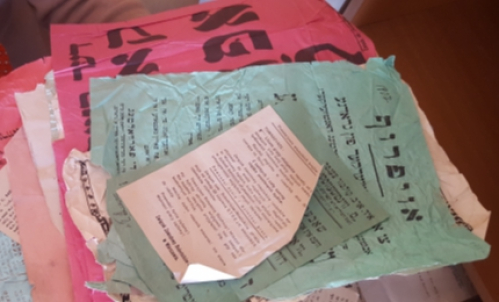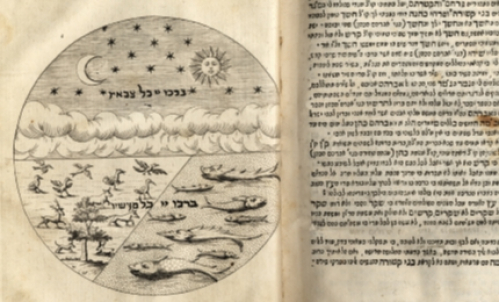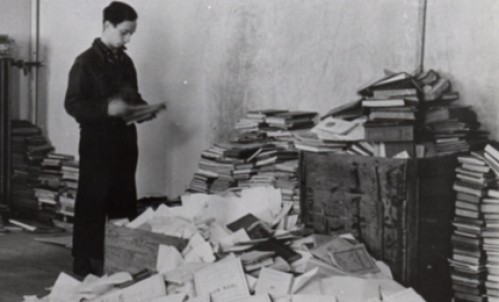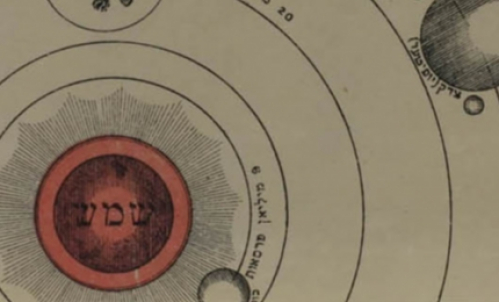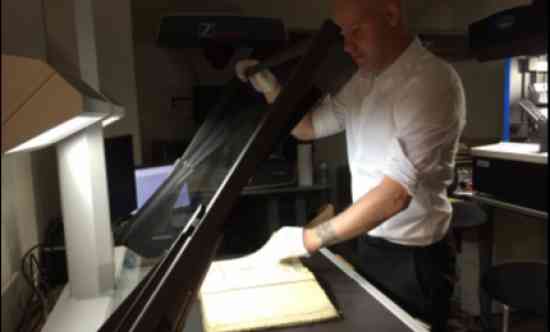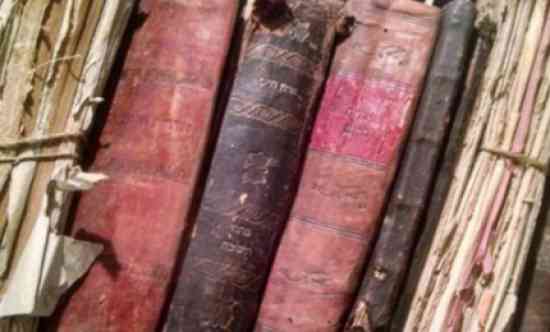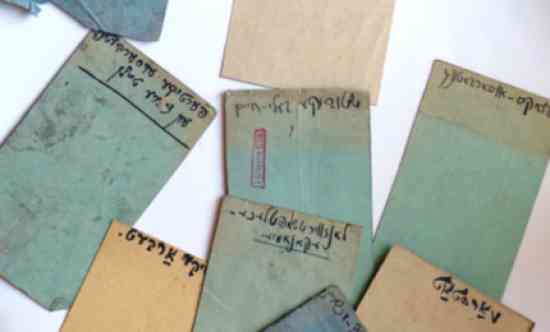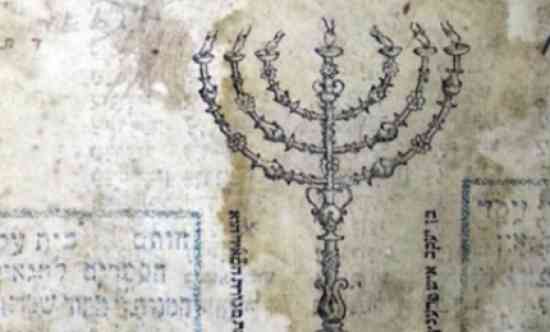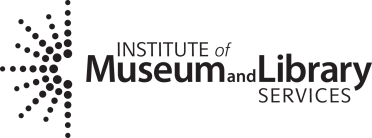This finding aid is scheduled to be upgraded and linked to digital images for the Edward Blank YIVO Vilna Online Collections project.
The Records of the YIVO Ethnographic Committee is a sub-group of the Record Group 1, Records of YIVO - Vilna. The activities of the Ethnographic Committee consisted of collecting folklore materials, preparing and analyzing folklore questionnaires, corresponding with folklore collectors throughout the world, and maintaining a museum. This collection also includes surviving fragments of the collections of the S.Ansky Jewish Historical and Ethnographic Society which was active in Vilna from 1920 until 1940, and of Invayskult, also known as the Jewish Bureau of the Byelorussian Academy of Science in Minsk (founded in 1925 and dissolved in the 1930s). Record Group 1.2 includes both administrative files of the aforementioned institutions and folklore and historical materials, which were gathered in these institutions' archives.
This collection comprises the records of several organizations in Vilna that engaged in ethnographic study from the turn of the century through WWII. Of particular note are the administrative records of Ansky’s ethnographic expedition of 1912-1914, such as budgets and planning documents, as well as postcards and letters from the public in response to an article about the expedition in Der Moment, the Warsaw daily Yiddish newspaper in Series II. Series II also contains the records of the Society of Friends of Jewish Antiquity, covering the years 1885-1919, as well as its successor the S. Ansky Jewish Historical Ethnographic Society, which covers 1913-1940. Series I contains the YIVO Ethnographic Commission, which started later, but operated simultaneously with the S. Ansky Jewish Historical Ethnographic Society, from 1923-1940. The collection contains both administrative records from these societies and the written contents of their collections, such as folk songs, folk tales, descriptions of customs and ethnographic reports. There are inventories of the museums that several of these organizations operated, giving a sense of what physical objects these societies collected and displayed, as well. Series I also contains a number of folders containing pornographic materials (nos. 34-39), although these have not been catalogued on an item level, and so could not be included in the container list. Series III contains ethnographic materials originating from Invayskult, in Minsk, such as folk songs, stories, and proverbs, but unfortunately lacks the institutional context of administrative records found in the other two Series. Series IV consists of unsorted materials, which largely originate from YIVO, and resemble the materials found in Series I.
The addenda contain additional materials created by the YIVO Ethnographic Commission. Addendum I, which consists of five boxes, includes songs with musical notations as well as the song lyrics, ethnographies, riddles and rhymes typically of the rest of the collection. It also contains correspondence from YIVO and the Ethnographic collection with ethnographers, and articles on ethnographic topics by YIVO scholars. Addendum II contains ethnographic materials likely collected by the S. Ansky Jewish Historical Ethnographic Society, including many types of songs as well as ethnographic descriptions of towns.
Please note that the dates for folklore materials are ambiguous; they may refer to the date the information was recorded, or the date of creation of the song or folktale, according to the zamler's research. Those dates are noted with the term "circa." Unmarked dates definitely represent the date of a document's creation.
Ethnography played a central role in the development of Jewish studies in the early twentieth century, and the resources in this collection reflect the importance of the subject in the eyes of YIVO scholars and the many zamlers, or collectors, who assembled these materials on a voluntary basis. In 1891, Shimon Dubnow called for increased efforts in understanding and preserving the history of Eastern European Jewry, and S. Ansky demonstrated the practice of ethnography in his famous Expedition of 1912-1914 and incorporation of folkloric ideas in his immensely popular play, The Dybbuk. Ethnography had long been a preoccupation in Yiddish culture, playing a major role in maskilic literature, but during this period it became institutionalized and incorporated contemporary scientific practices.
YIVO Ethnographic Committee
YIVO – the Yiddish Scientific Institute – was founded in Vilna in 1925. It was organized in four permanent sections: Philology, History, Economics and Statistics, and Psychology and Education; the Ethnographic Committee was a sub-section of the Philological Section. At its inception in 1925, the Ethnographic Committee was established in cooperation with the S. Ansky Jewish Historical Ethnographic Society, with both organizations sharing in its financial support. The work of the Ethnographic Committee consisted of preparing and analyzing folklore questionnaires, correspondence with a network of hundreds of voluntary collectors throughout Europe, the United States, Canada, South America and other parts of the world, issuing instructions to collectors, acknowledging receipt of materials, organizing special circles of collectors in various towns and cities, arranging contests for the best folklore collections. It was a popular success, attracting hundreds of people to participate in its mission of documenting their communities. The Committee also maintained a museum and presented special exhibits. Members of the Ethnographic Committee included Shloyme Bastomski, folklorist and teacher, Dr. Max Weinreich, philologist, member of the Executive Committee of YIVO, N. Weinig, folklorist, Nekhama Epstein, folklorist, and Zalman Reisen, lexicographer, member of the Executive Committee of YIVO. N. Khayes, folklorist, served as secretary of the Committee. In 1930, the name of the Ethnographic Committee was changed to Folklore Committee. Throughout the history of its existence, the Ethnographic Committee was a flashpoint for tensions between YIVO and the S. Ansky Jewish Historical Ethnographic Society, which competed for influence and increasingly scarce resources for ethnographic work. The two organizations eventually parted ways, with the Ethnographic Society focusing more on material culture and the maintenance of a museum, while YIVO focused on written documents and scholarly materials.
Ansky Jewish Historical Ethnographic Society
The S. Ansky Jewish Historical Ethnographic Society was the successor of the Society of Friends of Jewish Antiquity founded in 1913 by L.V. Frenkel and the Historic Commission, founded by the Hevrah Mefitsei Haskalah to document the effects of the first World War on Jewish communities. It is a separate entity from the Historic-Ethnographic Commission, which was founded by the Hevrah Mefitsei Haskalah in 1892. After 1908 it became known as the Jewish Historic-Ethnographic Society of St. Petersburg. This society published Evreiskaia starina (The Jewish Past) from 1909-1918 and sponsored Ansky’s expeditions in 1912-1914. It was shut down by the Bolshevik government in 1917. In 1919, following World War I, S. Ansky renewed the work of the Society of Friends of Jewish Antiquity, now called the Jewish Historical Ethnographic Society of Lithuania and White Russia. After Ansky’s death, in 1920, the Society and its Museum were named after him, and drew partial support from Ansky’s bequest of one sixth of his estate. The society found itself at odds with YIVO from time to time, but also involved some of the same people, notably Max Weinreich, Zalmen Reyzin, and Tsemakh Shabad. After 1939 the ethnographic materials of the S. Ansky Society were merged with YIVO. The society comprised an Executive Committee and the following sections: Music, Folklore, History, Art and Museum, Ansky, Catalogue, Literary, and Pinkes (Town Chronicles). The Society also maintained a museum, library and archive.
Invayskult
Invayskult was the department of what would now be known as Jewish Studies at the Belorussian Academy of Sciences, located in Minsk. It was founded at the same time as the Academy of Sciences itself, in 1924. Invayskult was also known as the Jewish Division, or Yidopteil. They published the scholarly journal Tsaytshrift, which attracted contributions from notable Yiddish scholars such as Max Weinreich. In the early years, Invayskult frequently corresponded with YIVO, and oriented their research toward Eastern European, and especially Lithuanian Jews, who were considered "Lithuanian-Belorussian." Invayskult was dissolved in the 1930s.
Reference
Cecile E. Kuznitz, “An-sky’s Legacy: The Vilna Historic-Ethnographic Society and the Shaping of Modern Jewish Culture” in The Worlds of S. Ansky (Stanford: Stanford University Press, 2006), 320-345.
Series I: Ethnographic Committee of YIVO , undated, 1909-1940
In Yiddish and Polish.
Folklore materials collected by the many individual zamlers (collectors) working for the YIVO Ethnographic Committee constitute the bulk of Series I. These diverse materials include folk plays, lyrics to folk songs (these have been extensively analyzed by Chana Mlotek), tales, jokes, anecdotes, and legends, pornographic stories, sayings, proverbs, nicknames of geographical places, descriptions of local religious customs, children’s rhymes and games, and research notes on ethnographic subjects. Series I also includes administrative materials, such as the Strategic Plan that outlines the goals of the Ethnographic Committee as well as other committees in the Philological section, correspondence with zamlers, and YIVO publications such as reports, questionnaires distributed for use by the zamlers, and analytical articles on ethnography. There are also a few linguistic materials, including notes on pronunciation and grammar, and Yiddish translations of Polish words.
Subseries 1: Administrative Records , 1923-1939
Folder 6: Questionnaires , 1925-1927
Subseries 2: Folklore Materials , undated, 1909-1939
Folder 12: Folk plays received from collectors’ circles , undated
Folder 13: Copies of folk plays , 1909
Folder 14: Folk plays received from collectors’ circles , undated
Folder 16: 137 songs , circa 1926-1928
Folder 17: 4 songs , undated
Folder 18: 9 songs , undated
Folder 19: 8 songs , circa 1930
Folder 20: 195 songs , undated
Folder 21: 55 songs , circa 1925-1928
Folder 22: 360 songs , undated
Folder 23: Sheet music and songs , circa 1918-1925
Folder 62: 38 handwritten descriptions on the observance of Purim in Ostrow collected by Z. Tamuz , undated
Folder 68: Parts of S.Z. Pipe's papers , 1930
Subseries 3: Linguistic Materials , undated, 1924-1930
Series II: S. Ansky Jewish Historical Ethnographic Society , undated, 1885-1940
The records of the Ethnographic Expedition led by S. Ansky, including meeting minutes, budgets, plans, and public responses, comprise the bulk of the first subseries, which is small in size but great in significance. This subseries also contains the minutes of the museum committee for the Jewish Historical Ethnographic Society, and the correspondence of the society, including correspondence from S. Dubnow. The second subseries contains the records of the Society of Friends of Jewish Antiquity, one of the predecessors of the Ansky expedition. It includes meeting minutes, correspondence, publications and other administrative records. However, the bulk of this series consists of the records of the S. Ansky Jewish Historical Ethnographic Society in Vilna, including organizational plans, meeting minutes, correspondence with Polish authorities, appeals for ethnographic materials, financial accounts, records of the museum and its holdings, dealings with the Ansky estate, and correspondence with many Jewish cultural organizations in Vilna, as well as 8 folders of ethnographic materials that it collected.
Language of Material: In Yiddish, Russian, Polish, and German
Subseries 1: Jewish Historical Ethnographic Society, St. Petersburg , 1890-1925
Subseries 2: Society of Friends of Jewish Antiquity , undated, 1885-1919
Folder 79: Correspondence , 1913-1919
Folder 81: Missing , 1885
Folder 83: Letters from the Petersburg Committee of the Jewish Literary Society to the J.L.S in Riga , 1910
Subseries 3: S. Ansky Jewish Historical Ethnographic Society, Vilna , undated, 1890-1940
Folder 101: Ansky estate materials , 1925-1936
Folder 102: Lists of tale types of the 24 folders received by the Society stories , undated
Folder 112: Correspondence with The Kehillah (Jewish Community) , 1919-1940
Folder 113: Correspondence with YIVO , 1925-1938
Folder 129: Correspondence with Miscellaneous Organizations , 1920-1938
Folder 133: Fragments of Jewish folklore , circa 1931
Folder 134: Two songs (missing) , undated
Folder 137: Folklore Materials , circa 1940
Series III: Invayskult , undated, 1907-1941
Contains ethnographic materials from Russian Jewish culture, such as song lyrics with a Soviet theme or origin, proverbs and folktales from the region, rhymes and dialectical terms.
Language of Material: In Yiddish and Russian
Subseries 2: Proverbs and Folktales , undated, 1918-1941
Folder 168: Proverbs , circa 1939
Subseries 3: Miscellaneous , undated, 1926-1938
Folder 169: Various genres of folklore; Correspondence to Invayskult , 1926-1928
Series 4: Addendum I , undated, 1926-1933
This series consists primarily of YIVO ethnographic materials, such as correspondence with scholars and zamlers, the folklore materials collected by those zamlers, and manuscripts of articles on ethnography. It also contains musical notations, and articles on Yiddish theater in New York.
Language of Material: In Yiddish, Hebrew, and Russian.
Series 5: Addendum II , undated, 1928-1930
This supplement contains songs that have been organized in some fashion and are frequently numbered, but not dated. They are sometimes ascribed to an individual writer or performer. Most documents are stamped by the S. Ansky Jewish Historical Ethnographic Institute; one or two bear a YIVO stamp.
Language of Material: In Yiddish and Russian.
Archival Reference Information
- German
- Hebrew
- Lithuanian
- Polish
- Russian
- Yiddish
- 1885-1941
- 1911-1940
Organization: Boxes 1-13 are arranged; Boxes 14-18 are unarranged
Arrangement: The Collection is arranged in 3 series: I) Ethnographic Committee of YIVO (folders 1-73); II) S. Ansky Jewish Historical Ethnographic Society (74-138); III) The Jewish Bureau of the Byelorussian Academy of Science in Minsk (139-171)
Organization: Boxes 1-13 are arranged; Boxes 14-18 are unarranged
Arrangement: The Collection is arranged in 3 series: I) Ethnographic Committee of YIVO (folders 1-73); II) S. Ansky Jewish Historical Ethnographic Society (74-138); III) The Jewish Bureau of the Byelorussian Academy of Science in Minsk (139-171)
- Minsk (Belarus)
- Vilnius (Lithuania)
- An-Ski, S., 1863-1920
- Rejzen, Zalman, 1887-1941
- Schabad, Z., 1864-1935
- Weinreich, Max, 1894-1969
- Ethnology
- Ethnomusicology
- Folk literature, Yiddish
- Weinreich, Max, Jofen, Jean
- Yidisher visnshaftlekher institut
- Yidisher visnshaftlekher institut Filologishe sektsye
- YIVO Archives
- YIVO Institute For Jewish Research (New York)
- Correspondence
- Field Notes
- Manuscripts
- Research Notes
- Correspondence
- Field Notes
- Manuscripts
- Research Notes
- Weinreich, Max, Jofen, Jean
- Yidisher visnshaftlekher institut
- Yidisher visnshaftlekher institut Filologishe sektsye
- YIVO Archives
- YIVO Institute For Jewish Research (New York)
- Yivo Institute for Jewish Research
- Ethnology
- Ethnomusicology
- Folk literature, Yiddish
- Folklore
- Folk songs, Yiddish
- An-Ski, S., 1863-1920
- Rejzen, Zalman, 1887-1941
- Schabad, Z., 1864-1935
- Weinreich, Max, 1894-1969
- Minsk (Belarus)
- Vilnius (Lithuania)
- An-Ski, S., 1863-1920
- Artists
- Belorussia
- Correspondence
- Field Notes
- Manuscripts
- Research Notes
- Ethnology
- Ethnomusicology
- Folk literature, Yiddish
- Minsk (Belarus)
- Music
- Rejzen, Zalman, 1887-1941
- Schabad, Z., 1864-1935
- Vilnius (Lithuania)
- Weinreich, Max, 1894-1969
- Weinreich, Max, Jofen, Jean
- Yidisher visnshaftlekher institut
- Yidisher visnshaftlekher institut Filologishe sektsye
- YIVO Archives
- YIVO Institute For Jewish Research (New York)
Search in the "YIVO - Vilna Ethnographic Committee Records" Archival Collection (RG 1.2)
Permission to publish part or parts of the collection must be obtained from the YIVO Archives. For more information, contact:YIVO Institute for Jewish Research, Center for Jewish History, 15 West 16th Street, New York, NY 10011 email: archives@yivo.cjh.org
YIVO owns the compilation of content that is posted on this website, which consists of text, images, and/or audio, and video. However, YIVO does not necessarily own each component of the compilation. Some content is in the public domain and some content is protected by third party rights. It is the user's obligation to determine and satisfy copyright or other use restrictions when publishing or otherwise distributing materials found in YIVO websites.
The materials on this web site may be used for personal, research and educational purposes only. Publication (including posting on the Internet and online exhibitions) or any other use without prior authorization is prohibited. Please visit https://www.yivo.org/Rights-Reproductions for more information about use of materials from this website.
YIVO has employed due diligence in seeking to identify copyright holders of the materials in this compilation. We invite any copyright owners who are not properly identified to contact us at yivomail@yivo.cjh.org.
The Edward Blank YIVO Vilna Online Collections project is an international project to preserve, digitize, and virtually reunite YIVO’s prewar library and archival collections located in New York City and Vilnius, Lithuania, through a dedicated web portal. The project will also digitally reconstruct the historic, private Strashun Library of Vilna, one of the great prewar libraries of Europe.
This project is a partnership between the YIVO Institute for Jewish Research, the Lithuanian Central State Archives, the Martynas Mažvydas National Library of Lithuania, and the Wroblewski Library of the Lithuanian Academy of Sciences, and includes the cataloging, conservation, and digitization of documents and books in both New York and Vilnius.
In May 2017, some 170,000 pages of previously unknown documents, lost to history for almost 70 years, were discovered in Vilnius, significantly expanding the scope of our project.
Read the article in the New York Times Watch our press conference
Are you using Edward Blank YIVO Vilna Online Collections material for your project? If so, please feel free to share information about your project here.
